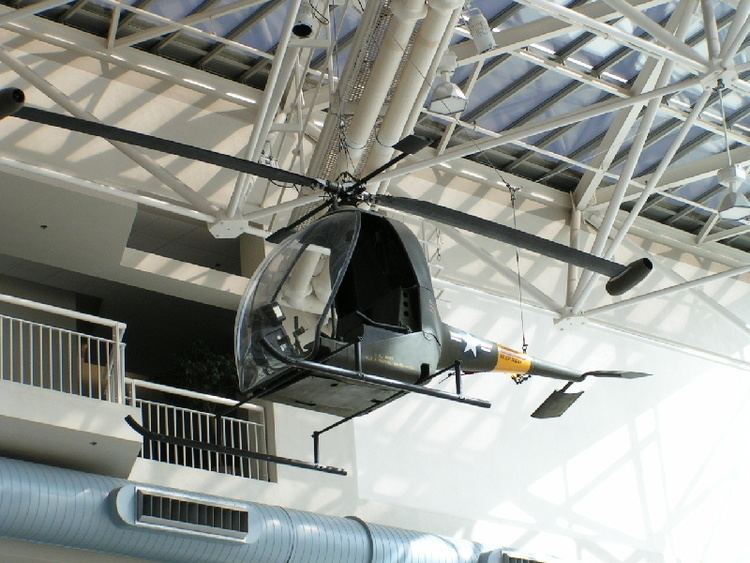 | ||
"Tip jet" refers to the jet nozzles at the tip of some helicopter rotor blades, to spin the rotor, much like a Catherine wheel firework. Tip jets replace the normal shaft drive and have the advantage of placing no torque on the airframe, so no tail rotor is required. Some simple monocopters are composed of nothing but a single blade with a tip rocket.
Contents
Some tip jets use compressed air, provided by a separate engine, to create jet thrust. Others use an afterburner-type system to burn fuel in the compressed air at the tip (tip-burners) to enhance the thrust. Some are ramjets or even a complete turbojet engine. Some are rocket tip jets that run off stored propellant such as hydrogen peroxide.
If the helicopter's engine fails, the tip jets on the rotor increase the moment of inertia, hence permitting it to store energy, which makes performing a successful autorotation landing somewhat easier. However, the tip jet also typically generates significant extra air drag, which demands a higher sink rate and means that a very sudden transition to the landing flare must occur for survival, with little room for error.
History
The Austrian philosopher Ludwig Wittgenstein investigated a tip jet design while studying aeronautical engineering at Manchester University.
The Italian designer V Isacco built "Helicogyres" in the 1920s which used piston engines at the ends of the rotary wing and he foresaw that they might be replaceable by jets.
During the Second World War a German, Friedrich von Doblhoff, suggested powering a helicopter with ramjets. The first tip jet-powered helicopter was the WNF 342 V1 in 1943. After the war two WNF 342 prototypes ended up with the Americans and Doblhoff joined McDonnell Douglas who subsequently produced the McDonnell XV-1. The engineer who had actually produced the tip jet engines, August Stephan, joined the Fairey Aviation company of the United Kingdom which used them in their Fairey Jet Gyrodyne and Fairey Rotodyne aircraft first flying in 1954 and 1957 respectively.
Eugene Michael Gluhareff was an early pioneer of tip jets.
Cold tip-jets
(Note: the compressed air in cold tip-jets generally exited at quite high temperatures, but no fuel was burnt in the gas flow)
Hot tip-jets
Ramjets
Pulsejets
Rockets
(Note: Fuel and oxidiser supplied to combustion chambers at the rotor tips.)
None, apart from the Sud-Ouest Djinn, enterred production.
